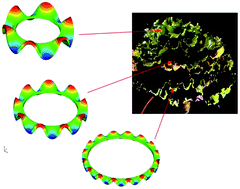Pattern formation in plants via instability theory of hydrogels
Abstract
In this paper, we demonstrate how deformation patterns of leaves and fruits in growing and drying processes can be described via the inhomogeneous field theory. The distorted deformation of ribbed leaves and the ridge formation on fruit surfaces can be understood as the energy-minimizing mechanical buckling patterns. The swelling and de-swelling induced instabilities of various membrane structures or elastic sheets on elastic or gel-like substrates are simulated using the inhomogeneous field theory of a polymeric network in equilibrium with


 Please wait while we load your content...
Please wait while we load your content...